In common vernacular, it is Milan and Inter. The giants of the Italian and European game technically called AC Milan and Internazionale Milan are ubiquitous with football in the 1990’s and the revolution that swept Britain in the time of Channel 4 showing Serie A. The respective strips, black and red stripes for Milan and blue and black stripes for Inter were synonymous with football culture at that time.
For the purposes of this feature piece, however, we will concentrate on the fortuned in recent times of just one of these two sides, Milan.
The names run off the tongue, Frank Rijkaard, Ruud Gullit, Marco Van Basten, Franco Baresi, Paolo Maldini, Roberto Donadoni, Clarence Seedorf, Andrea Pirlo Marcel Desailly, George Weah, Andriy Shevchenko, all fantastic professionals and all key players in a succession of great Milan sides that were dominant both domestically and in Europe.
At the centre of this success though was a culture of high performance that was second to none. There was an expectation of success that was driven by the senior players in the squad with the belief that as Milan players they should be held to a higher standard both on and off the pitch. This culture was self-perpetuating with a core of players within each squad having grown up inside what became known as the ‘Milan way’ leading the next intake of players into the squad.
Through a succession of great coaches such as Arrigo Sacchi, Fabio Capello and Carlo Ancelotti there was a common theme that ran through the club as a whole.
It is difficult then to pinpoint the time that things began to fall apart for the Rossoneri. A succession of managerial appointments that fell more on the questionable side of the line and some poor recruitment saw the continuity of the culture at the club stumble and eventually break apart.
There are signs now that sections of the club are starting to move in a more positive direction but there can be no doubt that they still have a long way to go in order to effectively challenge Juventus at the top of the Serie A table. Recent changes to the infrastructure at the club have seen two club legends in Leonardo and Paolo Maldini return to the club as sporting director and sporting strategy & development director. These latter moves, in particular, are seen as significant as former captain Maldini had resisted all efforts by the club to appoint him in ambassadorial roles. He always maintained that he disagreed fundamentally with the culture at the club and how the club was run from the top down. These moves were further supported by the appointment of the former Arsenal executive Ivan Gazidis as the CEO of the club.
So, off the pitch matters appear to be improving but what of on the pitch? Since November 2017 former midfield enforcer Gennaro Gattuso has been coach at the club, previously he had worked with the youth team. Just over a year on, however, the jury is still very much out on whether Gattuso has the tactical acumen and ability as a coach to take Milan on to the next level.
In this feature, we will take an in-depth look at the tactical issues facing Milan and Gattuso at the moment before identifying three alternatives that the club may turn to should they decide to make a change.
The tactical issues
This section should perhaps be prefixed by the assertion that Gattuso and Milan have suffered from a lengthy injury list over the first half of this season. With that said, however, even with a fully fit squad there is a definite sense that the club would still struggle tactically under Gattuso.
Whilst the side remains relatively strong defensively despite having conceded 19 goals in 18 Serie A games at the time of writing. The back four is well drilled and compact in the defensive phase, The main issue with the tactical setup this season for Milan comes further up the field in the final third.
The headline transfer deal for Milan in the summer saw them sign the Argentine forward Gonzalo Higuain on a season-long loan with an option to buy from Juventus. This signing was initially heralded as a coup for Milan, considering that Juventus has spent €90M+ to bring the forward to Turin from Napoli. To this point in his Milan career though, we have not seen Higuain provide the goal threat that was expected. In his age 31 season this should not come as a surprise as he has lost what little pace he possessed in the first instance.
Attacking Issues
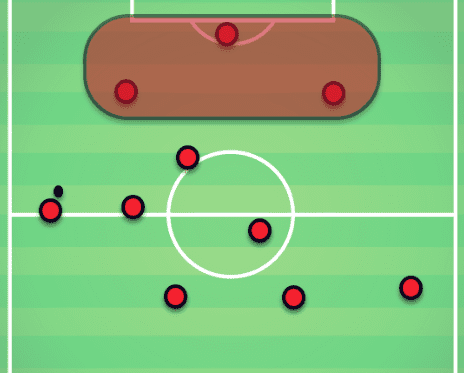
With Higuain leading the line, keeping the youth product Patrick Cutrone consigned to the bench or the wing, Milan have very little mobility in terms of movement across and around the defensive line. Whilst his pace has regressed we have to concede that Higuain still possesses fantastic movement in the confined spaces of the penalty area. In order for this to be a factor in the attacking phase though, Milan needs to create pockets of space in the final third.
In order to create these spaces, Milan have to stretch the defensive structure of the opposition horizontally, forcing them to spread out across the width of the pitch. In order to do this, we would need to see the wide forwards for Milan play with width in the attacking phase. Instead, the likes of Suso, in particular, look to drift inside into the half spaces or even the central areas of the field. This congests the central areas of the pitch and allows the opposition to play in a compact block that will deny Higuain the space that he needs to be successful.
Having the wide forwards naturally drift centrally would perhaps be a successful strategy if the fullbacks were able to take a high line to provide the wide option in the final third. Once again, Milan struggles to provide this width from the fullbacks with any regularity. Indeed, there seem to be two clear blocks that form when Milan attack with little support coming up to the attacking block from vertical runs.
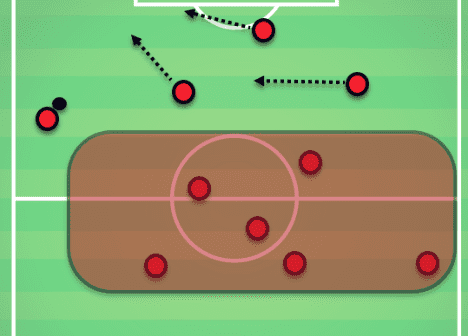
If one fullback moves high in possession then the other will sit deeper to provide a balance and allow the two central defenders to move across, essentially forming a back three. This is a perfectly common tactical concept that is used by top coaches around the world. It does, however, call for central players to be willing to make vertical runs in order to break the defensive line and get beyond the forward players. Once again this would create the pockets of space in and around the penalty area that Higuain could thrive in.
Instead, the Milan midfield is extremely static with a lack of verticality that sees the ball played backwards in the attacking phase too often. This lack of movement makes it too easy for the opposition to build a defensive structure to negate the threat from Milan as they attack.
Transitions
The lack of mobility that we see from this Milan side is also a huge problem when they look to transition from defence to attack.
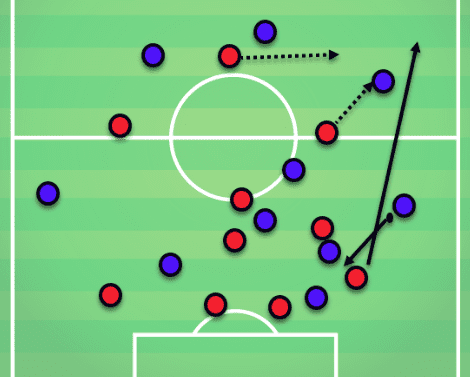
Another issue with the lack of genuine mobility in the front three for Milan sees them unable to transition effectively through a direct counter-attack. When the ball is won back in the Milan half of the field there are two clear and easy options for the man regaining possession. They can either play the short ball in order to retain possession, at the risk of being counter pressed, or they can look for a more vertical pass in order to turn the opposition defensive block and attack free space.
Only, they cannot utilise the second option because any ball into space in or around the defensive line of the opposition can be comfortably managed by the opponents’ defensive line because Milan lack the pace to attack the ball effectively when it is played forward in this manner.
This is not to say that Milan should necessarily look to be direct in their transition all of the time in the manner of the Red Bull clubs, but they need to at least have the option of doing so. Instead, the opposition are aware of the limitations of Milan in this area and they remain compact around the ball when they lose possession in the Milan half. This makes it more difficult for the Milan players to move the ball out comfortably and start a meaningful attack of their own.
Defensive phase
In his playing career, Gattuso was a destructive midfield player of little ability who excelled in the Milan midfield and impressed for the Italian national team. One of his biggest strengths, however, was that he recognised his own limitations on the pitch. You rarely saw Gattuso look to drive forward in possession of the ball or make delayed runs into the penalty area. Instead, he would look to do the simple things well, winning the ball back and then passing to a teammate with more creative ability.
There should be no surprise that under Gattuso Milan are relatively strong, one of the criticisms of the club in recent weeks has surrounded their failure to bring in an attacking specialist to complement the defensive acumen that Gattuso possesses on the training pitch.
With that said, there are still issues in the defensive phase that Milan need to address. Whether under Gattuso or a new coach should they be put in place.
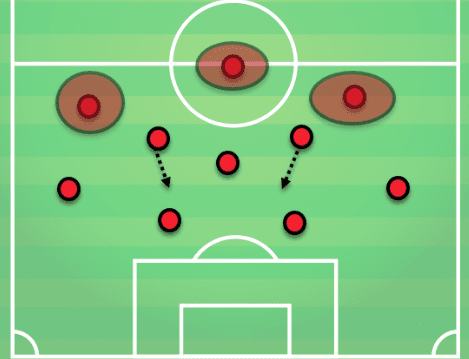
We have already seen that there is a split in the units that Milan adopts in the attacking phase. The same can be said of the defensive phase with the three forward players offering little in the way of defensive support or cover for their teammates further back.
When Higuain is selected as the lone forward he is unable to apply pressure effectively as the first line of defence. This allows the opposition the space and time to construct their attacking phase comfortably from the back. The same is true in the wide areas with the wide forwards for Milan seemingly caught in a no man’s land while not applying pressure effectively and not dropping back to defend the space in front of the fullback.
So, the tactical issues are evident. But, what about the recruitment at the club in recent seasons?
Recruitment
As with most Italian sides, there have been significant levels of recruitment at Milanello over the past two to three seasons. The issue with this recruitment is not necessarily that the players signed are poor but rather that there has been no overarching plan in place to guide the recruitment process.
Over this time period, there have been some players – Leonardo Bonnuci and Andre Siva, for example – who have failed to settle and make an impact at Milan. Others though have shown some promise over that timeline, the likes of Matthia Caldara and Mateo Musacchio in particular. Then there are those that have a proven track record of success in Serie A, Frank Kessie, and Andrea Conti. Both signed at some expense from Atalanta, have struggled for consistency so far in a Milan shirt.
In order for the club to get back to the level they want to they need to plan their recruitment in a more holistic manner. To do so they need to appoint a coach with a clearly defined playing philosophy and game model in order to plan a recruitment strategy that will provide the coach with the players needed to execute this game model. Instead, what we have seen in recent years is Milan continuously signing players either based purely on reputation or on getting a price that they believe made the deal worthwhile.
With that said I have identified three coaches that Milan may look to move for should they decide to sever ties with Gattuso. The first is comfortably the most high profile while the second and third have a proven track record at smaller Serie A sides and deserve the opportunity.
Jose Mourinho
Let’s get the obvious one out of the way first. The truth is that until he is appointed by a club once again then he will be linked to every high profile job. The fact that he managed Inter so successfully will not be held against him, the two clubs have swapped players regularly over the years. What may count against him is his insistence of playing a rigid system and favouring experienced players.
What you would get from Mourinho, however, is a set game model around which you can build your recruitment.
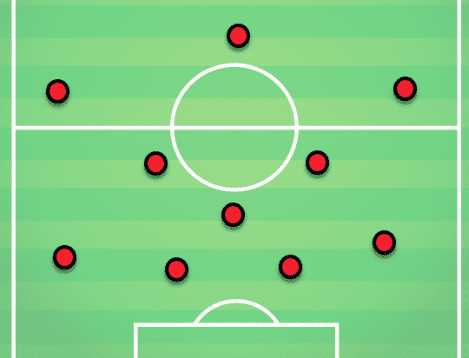
The 4-3-3 system is very much set now as the template for a Mourinho side. They would remain solid defensively and be well drilled if less than explosive in the attacking phase. There would be two key issues when it came to appointing the Portuguese coach to return to the San Siro though. Firstly, he would expect significant money to be spent on the first team squad and these funds would go on players in the 27-31 age bracket, with no resale value. Secondly, he famously does not trust youth players. Milan are keen to have more emphasis on their youth system and will expect to see any potential new coach access this stream of players for the first team.
Looking at it objectively, I feel as though it would be a huge mistake for Milan to turn to Mourinho, despite his track record in Italy.
Marco Giampaolo
Marco Giampaolo is not an overnight success, having started his managerial career in 2004 with Ascoli in the Italian lower leagues. He worked with limited success around the lower leagues before securing the position at Empoli in 2015. At the Tuscan side, we saw the first instances of the 4-3-1-2 system that has served Giampaolo so well at Empoli and now at Sampdoria.
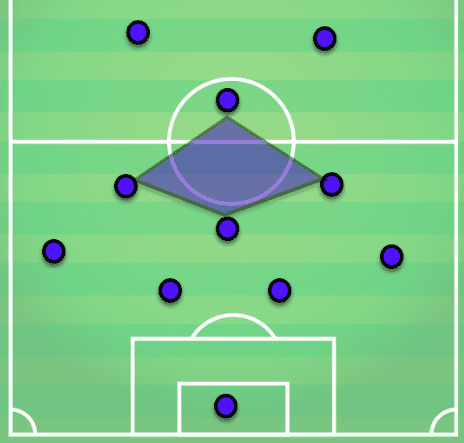
The key to the system favoured by Giampaolo is the diamond in the midfield with a relatively flat three and a single player in the ’10’ slot. The 51-year-old Swiss coach has developed a defensive system at Sampdoria that would fit in extremely well with the defensive players already at Milan.
Crucially, Giampaolo also uses an extremely potent attacking model with two forwards pressing the defensive line back in order to open up space for the midfielders and fullbacks to move forward and support the attacking players.
We have to acknowledge that Giampaolo has been supported by an excellent recruitment team at Sampdoria who identify players to fit with the coaches game model.
Gian Piero Gasperini
The third option is another former Inter coach in the current Atalanta chief Gian Piero Gasperini. The coach impressed hugely during a stint at Genoa before earning an opportunity to coach Inter in 2011. As is often the case at a bigger club, the players and recruitment did not match the very specific style that Gasperini prefers.
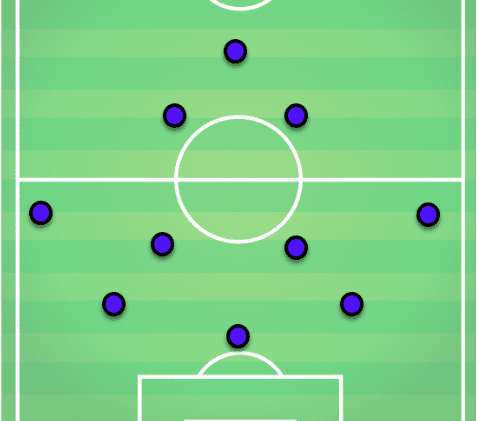
Gasperini has long been a coach who utilises a three at the back system. Over time this has evolved into the 3-4-2-1 that we see utilised by the successful Atalanta side today. Within this system, there is a great deal of flexibility both in the attacking and defensive phase with centre-backs encouraged to dribble forward to provoke the opponents’ defensive structure and attacking midfielder encouraged to split wide defensively to support wing backs.
There is a growing feeling in Italy that Gasperini deserves another opportunity at a top club and he seems to have developed his game model to the extent that it is entirely transferable from one side to another.
During his time in Bergamo, we have also seen Gasperini impress when it comes to the development and integration of players from the successful Atalanta youth academy, a factor that could be extremely important for the Milan decision makers.
Conclusion
It is an unfortunate fact within football that the tenures of coaches at the top level do not last long without positive results. Despite being a playing legend at the club it seems likely that Gennaro Gattuso is living on borrowed time at Milan.
If the decision was up to me then I would move to appoint Marco Giampaolo of Sampdoria to be the man to take Milan forward and develop the club. There is a small issue in this, however, in the rule within Italian football that a club cannot appoint a coach who has already managed another Serie A side that season. As such, Milan would have to move to impose a temporary solution before appointing Giampaolo at the end of the season.
In either case, there is a genuine need to revamp Milan from the top down to the bottom in order to impose the type of culture that made them an iconic club of European football.
If you love tactical analysis, then you’ll love the digital magazines from totalfootballanalysis.com – a guaranteed 100+ pages of pure tactical analysis covering topics from the Premier League, Serie A, La Liga, Bundesliga and many, many more. Get your copy of the FIRST of two December issues for just £4.99 here or preorder the SECOND of the December issues with an annual membership right here.

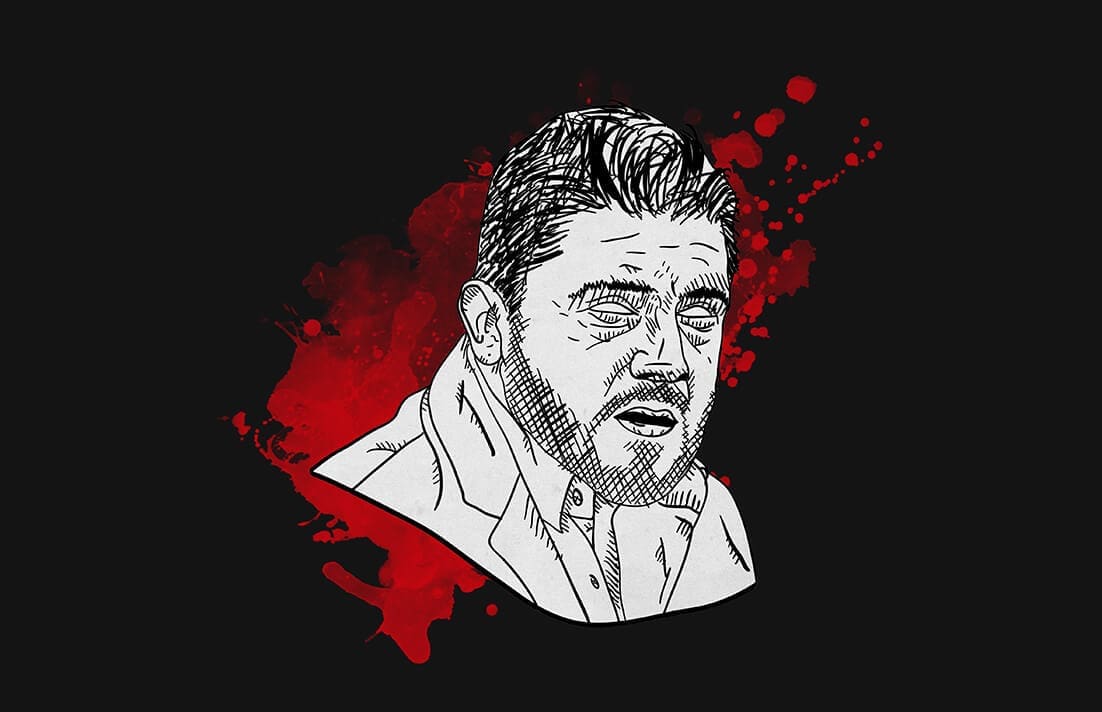




Comments